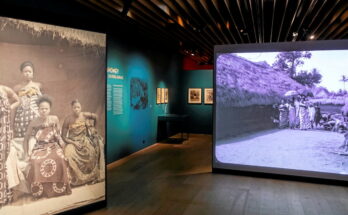Corpus Christi hasn’t changed much since Selena Quintanilla sang “Como la Flor” at rodeos and fairs in South Texas. The Gulf wind still carries the scent of gasoline and cotton, and her smile remains unchanged on the statue on the waterfront, as if the tragedy had not touched her.
Now, three decades after his murder at age 23, a new documentary reopens the Quintanilla family archives. He does it not with nostalgia, but with unprecedented intimacy. The project is directed by Isabel Castro, 35, a director of Mexican origin who grew up in Connecticut and is known for her documentaries Treasure (2022), about young Latinas who dream of succeeding in the music industry.
“When Selena’s family decided they were finally ready to make a documentary, they already knew my work. Treasure they touched on many of the issues they wanted to explore: identity, music, Mexican heritage. And that’s how we met”, recalls Castro speaking of the genesis of this new documentary, Selena and Los Dinos: a family’s legacywhich will premiere on Netflix on November 17. It was Suzette Quintanilla, Selena’s older sister and drummer for the band Los Dinos, who contacted her first. “We had a great understanding from the beginning. Shortly after, the entire team traveled to Corpus Christi and, upon arrival, opened the family archive. It was a closet full of VHS tapes, DVDs, home recordings… That’s when I knew there was an opportunity to do something different, something authentic.”
That closet became the basis for the documentary. For more than two years, Castro and his team cataloged and digitized all the material. “It was a very long process, but also a very intimate one,” Castro acknowledges. “During that time, a trust was built with the family. They understood that I didn’t want to make another film about tragedy, but about Selena’s life, joy and creative strength.”
During the conversation, Castro switches seamlessly between English and Spanish, as if the two languages were as intertwined as their identities. “I’m Mexican, but I also grew up in the United States. I never felt completely from either country,” she says. “And that’s what connected me so deeply to Selena. She was one of the first figures I saw be completely herself, unapologetic for not fitting in. She was criticized for not speaking perfect Spanish and she didn’t care. She taught us not to apologize for who we are. That trust was vital to me as a Mexican-American.”
Castro speaks calmly, but with the passion of someone who knows he is touching a shared cultural wound. In Selena and the dinosaursthe director moves away from Hollywood representation and focuses on the woman behind the music of the Queen of Tejano. “What surprised me when I looked at the archives was the level of family involvement,” explains the director. “I knew they worked together, but I didn’t know to what extent. AB III (Abraham Isaac Quintanilla, Selena’s brother) was a brilliant producer; Suzette, a key member of the band; Marcella (her mother), the heart that held everything together. Together they built a sound that is still heard everywhere. Selena was only 23, but in that short time they created more hits than many artists have in their entire career.”
Before the interview ends, Castro takes a lighthearted question: his favorite Selena song and outfit. She laughs. “My favorite song is ‘Como la flor,’ hands down. And my favorite look isn’t an outfit, it’s the cow print.” In fact, during the conversation with EL PAÍS, she herself wears a cow print belt.
The film, which arrives on Netflix after being screened at several festivals, including Sundance where it won the award for best documentary, does not only save the memory of an artist. It also gives Selena her voice back in a universal language: that of authenticity. In an era where identities continue to be questioned, Castro achieves what seemed impossible: making Selena sing, 30 years later, for her audiences in 109 countries and more than 32 languages.
Three decades after a loss that shaped an entire generation, Selena’s name, which doesn’t require a last name, continues to resonate across the continent. While the documentary brings her voice to life on screen, it temporarily shows her Selena: from Texas to the world will open its doors at the Grammy Museum in Los Angeles between January 15 and March 16, 2026, showcasing for the first time outside Texas the red Porsche, dozens of portraits, costumes, gold records and the original awards of the young and short-lived legend that was Selena Quintanilla-Pérez.
Sign up to our weekly newsletter to get more English-language news coverage from EL PAÍS USA Edition



